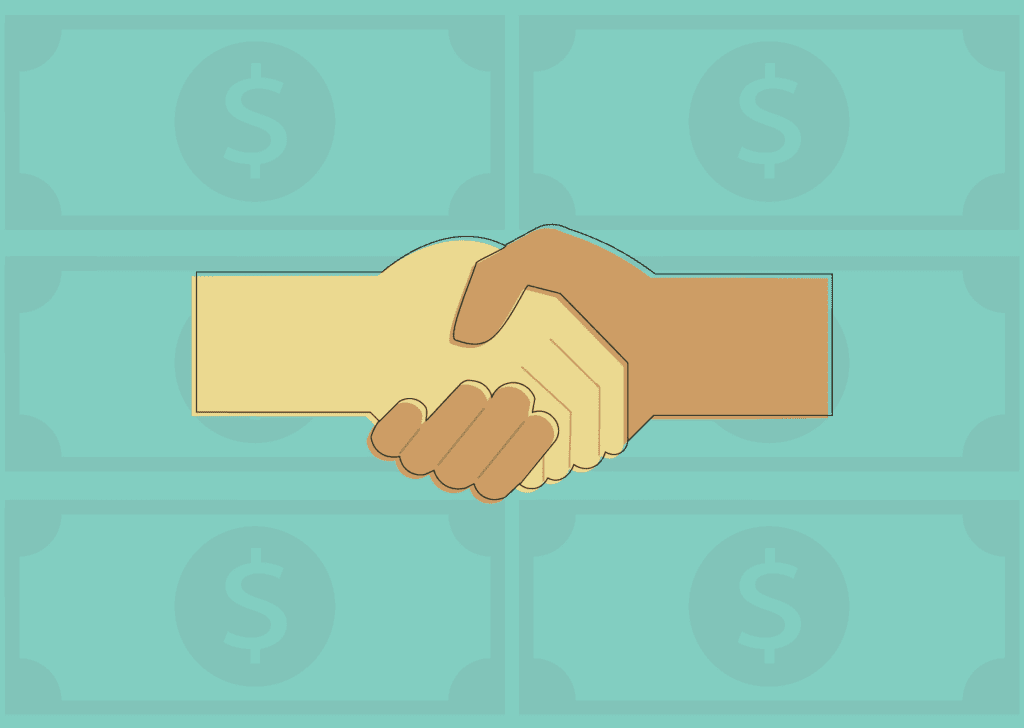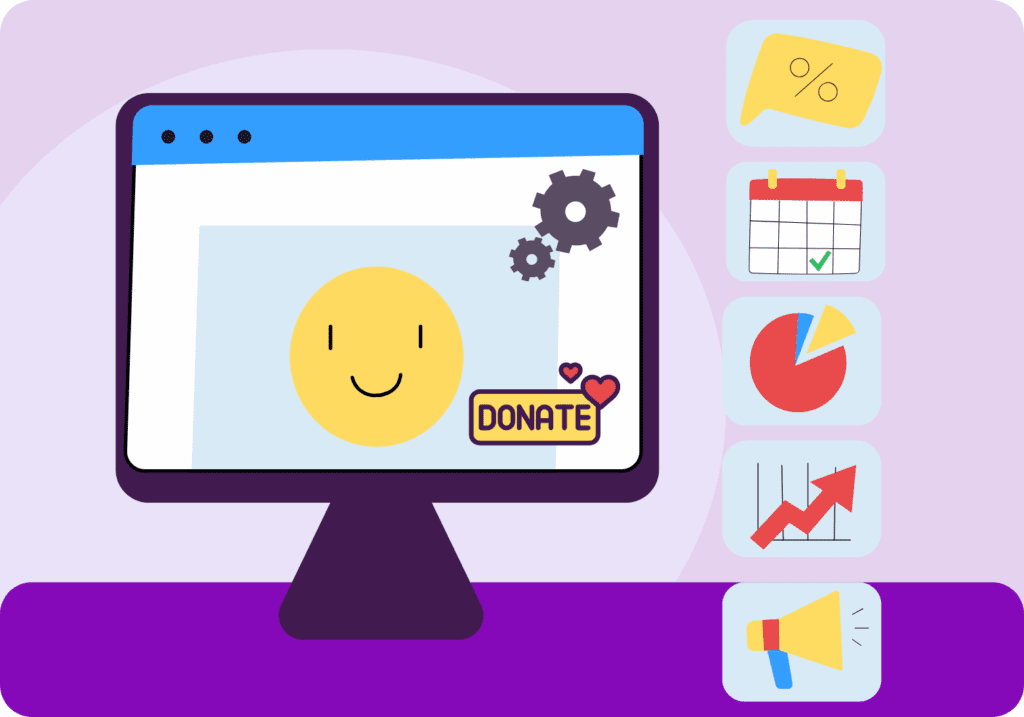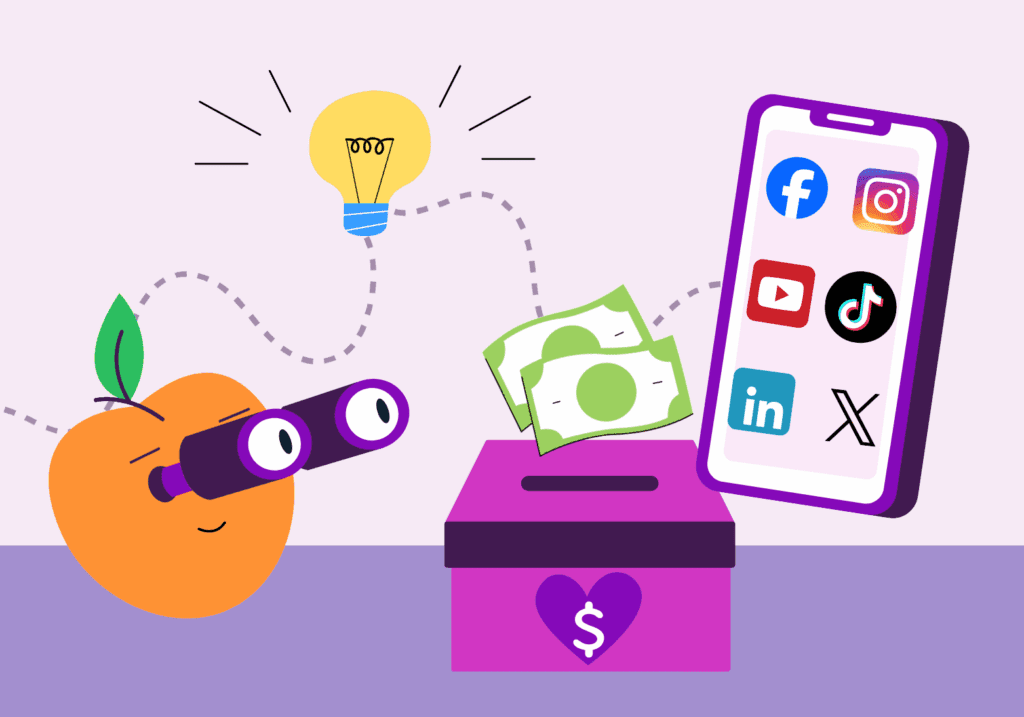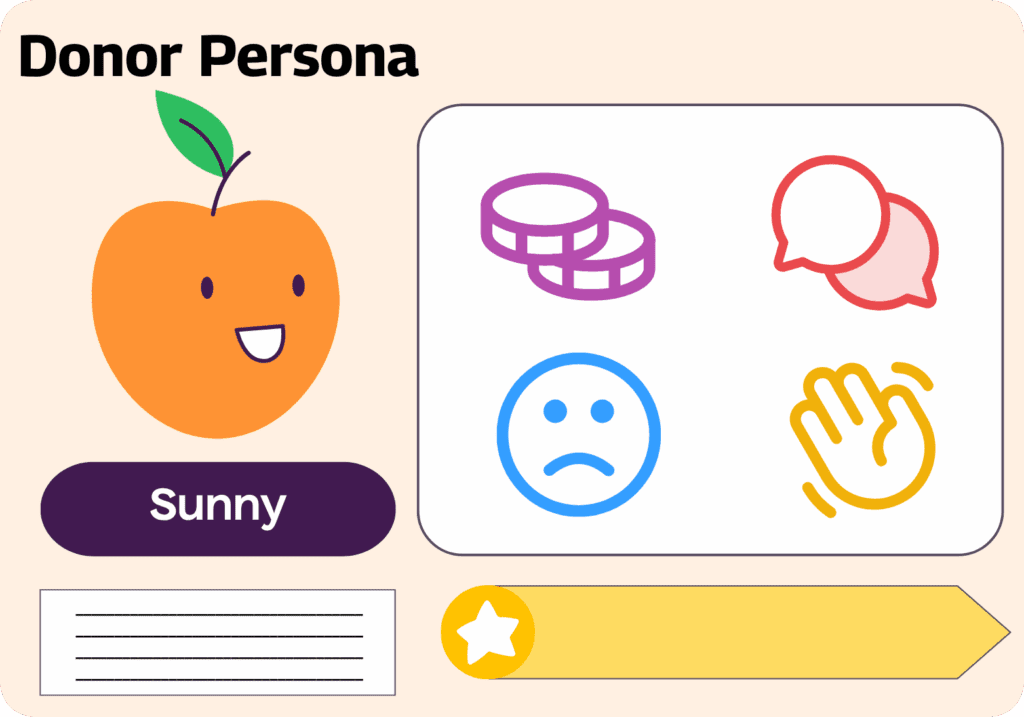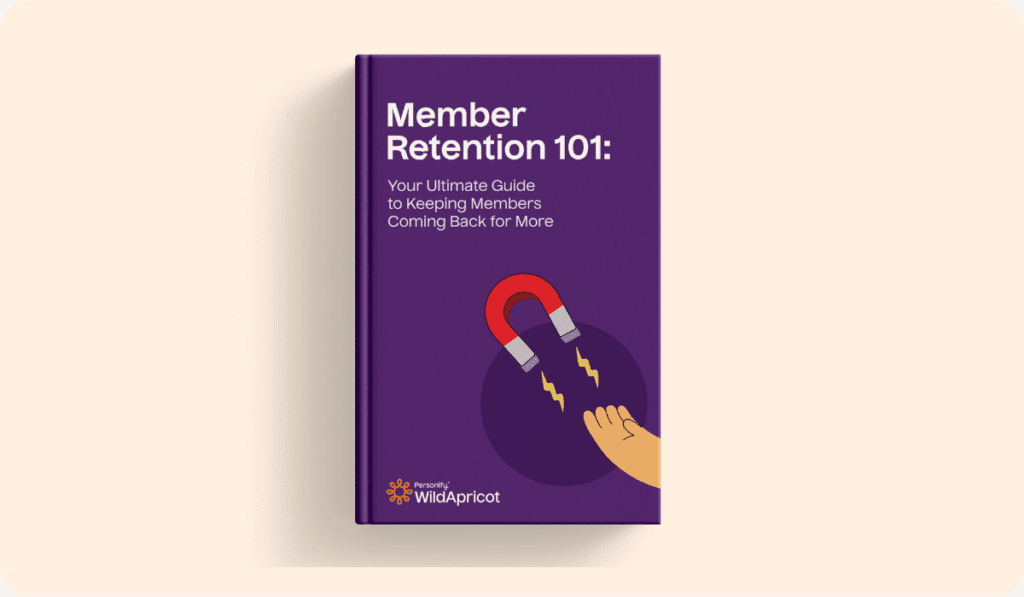As a dedicated event planner, you understand the significance of securing funding for orchestrating successful events. Recognizing this, you see event sponsorship as a pivotal element in obtaining the necessary resources to create remarkable experiences for your attendees.
Navigating the realm of event sponsorship can be challenging, especially if you’re new to the process. You are tasked with determining the right contacts, crafting appealing sponsorship packages, and assessing the need for sponsorship. These are critical considerations in your journey.
To assist you in your event planning endeavor, we put together this comprehensive guide to event sponsorships. This guide delves into various aspects of event sponsorship, from understanding its different types to identifying suitable sponsors for your event.
What is a Sponsorship?
A sponsorship is when a company commits money or resources to a nonprofit event or program in exchange for specific promotional benefits.
In exchange for supporting the nonprofit, the company gets their name and logo on things like:
- Banners
- T-shirts or wearable swag
- Posters
- Brochures
- Other marketing and communications collateral
The business objective of sponsorship is to reach a specific target audience and to earn a “halo” for supporting a good cause. By aligning themselves with purpose-based organizations, sponsors give their businesses a competitive edge that goes beyond product and price. It’s marketing, but more socially responsible.
Sponsorship is win-win and work-work. Both the nonprofit and the for-profit benefit from the partnership, but success depends on them working together to ensure the other’s success.
Types of Sponsorships
Depending on your needs, there are several different types of sponsorships that can help you with your next event:
Financial or Cash Sponsorship
A financial or cash sponsorship is the most traditional and widely used form of sponsorship. In this type, a company or individual provides money in exchange for benefits, such as advertising, branding opportunities, or VIP perks at your event. This form of sponsorship can help cover major event expenses, allowing you to focus on creating an exceptional experience for your attendees. To maximize this partnership, clearly outline the value the sponsor will receive, such as logo placements, speaking opportunities, or exclusive access to attendees.
In-Kind Sponsorship
In-kind sponsorships involve contributions of goods or services instead of money. This type of sponsorship can significantly reduce event costs and is appealing to businesses that may not have a large budget for cash sponsorships but can provide valuable resources. Examples of in-kind sponsorships include:
Venue Partner: A venue partner offers a location for your event, either for free or at a reduced cost. In exchange, the venue receives branding opportunities, such as signage or mentions in your promotional materials.
Prize Sponsor: A prize sponsor provides items or experiences for giveaways, raffles, or contests during your event. This helps enhance attendee engagement while promoting the sponsor’s products or services.
Food Sponsor: Food sponsors supply catering, snacks, or beverages for your event. In return, their branding is prominently displayed at food stations, on menus, or in thank-you announcements during the event.
Digital Sponsor: A digital sponsor contributes tech-based resources like social media filters, event apps, or digital displays. These elements enhance the attendee experience while giving the sponsor visibility across multiple digital platforms.
Media Sponsorship
Media sponsorships provide promotional support for your event, typically through advertising, editorial coverage, or public relations efforts. This type of sponsorship can be particularly valuable for increasing your event’s reach and visibility. For example, a local TV station might run a segment about your event, or a newspaper might offer discounted or free ad placements. To secure media sponsorships, highlight the mutual benefits, such as helping the sponsor engage with their audience or positioning them as a community partner.
Promotional Partner Sponsorship
Promotional partner sponsorships involve individuals or organizations that use their platforms to promote your event. These partners could include social media influencers, bloggers, or local thought leaders who have a strong connection with your target audience. For instance, a social media influencer might share event details with their followers, driving awareness and attendance. When working with promotional partners, provide them with clear messaging and assets, such as images or videos, to ensure consistent and effective promotion. This type of sponsorship works well for events aiming to create a buzz in online and local communities.
Sponsorship Example
If you’re looking for an example of sponsorship in action, take a look at the Boston Marathon, which is run by a nonprofit organization, the Boston Athletic Association or BAA. The event has a number of longstanding corporate sponsors, including running shoe maker Adidas.
Like I mentioned, a great sponsorship benefits both the nonprofit and the sponsorship partner. So what does that look like here?
The BAA benefits by:
- Receiving millions of dollars from Adidas and other corporate sponsors
- Raising the profile of their event as a world-class marathon by aligning themselves with brands (like Adidas) that are relevant household names
And how does Adidas benefit from the sponsorship?
- They get access to avid runners who are the perfect customers for Adidas shoes and gear
Being associated with such an important and famous event gives Adidas a favorable connection with thousands of runners and millions of spectators – both along the course and watching at home on television.
Is the partnership win-win for both partners? Absolutely. Do the BAA and Adidas have to work hard to ensure each other’s success? You bet.
One thing you don’t need to succeed with a sponsorship is a large athletic event like the Boston Marathon or a global shoe company like Adidas. There are many sponsorship opportunities with organizations of all sizes and types.

How to Get a Sponsorship: 8 Key Tactics
Before you start securing a sponsorship, keep these 8 key tactics in mind:
- Research potential sponsors. Look at your existing supporters. Evaluate each one to see if their goal and interests align with your values and audience—or if they could help you find other new sponsors.
- Tell your organization’s story. What makes your organization special? Define your key pitch elements and weave them together to tell a story that will appeal to potential sponsors.
- Provide sponsor incentives. Sweeten the deal by communicating what a sponsor will get out of the partnership (and how it’ll boost their visibility). Include examples of their organization will be featured, like:
- Marketing and promotional collateral
- Branded videos
- Social media content
- Event swag and goodies
- Reach out to established companies. Partner with established companies that have a positive reputation, have built trust and can boost your organization’s profile.
- Use data to legitimize your pitch. Data is everything. Don’t forget to take those important insights from your audience and feature them in the pitch.
- Find the right contact. Make sure you know who the right contact is. Often, this can be someone in the marketing department.
- Build a connection over time. A good relationship always starts with a strong foundation. Take time to get to know your potential sponsor and build a connection over shared values and concerns.
- Follow up. Whether it’s a problem of timing or funding, sometimes a “no” is just a “no for right now”. It’s worthwhile keeping these contacts on hand to follow up with in the future.
How to Find a Sponsorship with an Asset Analysis
Your first step is to do an asset analysis of your organization, events and programs. Look for assets that would be valuable to a potential business partner.
These may include:
- A successful fundraiser (e.g., walk, run, gala, etc.).
- A large donor [or membership] base.
- A large, engaged following on social-media sites.
- A targeted group of supporters [or members] that are women, Millennials, moms, parents, men, pet owners, and so forth.
- A large employee base.
- A visible, busy, or sought after building or location.
- A strong, well-recognized brand that people know and respect.
- Vendors that value their relationship with you.
- A strong, emotional mission. Do you serve kids? Do you save puppies from the pound? Do you help wounded soldiers returning from Afghanistan?
One of the most valuable assets you can have is an existing connection to a company. I like to say that a company in hand is worth two waiting in the bush!
Maybe you have a CEO that personally supports your cause, but hasn’t involved her company. Or perhaps your organization has a long-standing vendor relationship with a company that would be open to a fundraiser.
Nonprofits don’t usually know where to start when it comes to selling sponsorships to businesses. That’s because they have their sights set too high and miss the low-hanging fruit!
Read More: Everything you Need to Know About Virtual Sponsorship for Nonprofits
How to Get a Sponsorship: Defining Your Audience
As I mentioned, a winning sponsorship benefits both the sponsor and the nonprofit. But there’s another part of that equation: a great sponsorship also rewards your audience. And knowing your audience is key to snagging that perfect sponsor and delivering a successful event.
For your sponsors, your audience is your most valuable asset. All you need to do is frame your audience in the right way. By doing so, you’re showing your sponsor the breadth and depth of exposure their brand can get from the partnership. I recommend reviewing your data to draw out information that can qualitate what makes your audience so special.
You can investigate areas like your:
- Social media analytics: Metrics like impressions, engagement, and reach are important here. If you have a strong social following or high engagement with your content, show this to your sponsors.
- Demographic information: Use information like age, location, occupation, education, etc. to segment your audience into valuable groups.
- Membership engagement surveys: Engagement surveys can be a great source of data. They can reveal your audience’s interests, needs, and wants. Use this information to position your sponsorship pitch and show how a sponsorship would be a great match.
- Google Analytics: Page visits, website traffic, and
popular pages are all examples of the kind of information you can find
through Google Analytics that can sculpt the profile of your audience. - Post-event surveys: Another kind of survey, but this hones in on what has made your past events a success. Use this information to understand what your audience likes and how your sponsor can provide value.
Sponsorship Pitches: Everything You Need to Know
Consider this your crash course in delivering a successful sponsorship pitch. Armed with the right knowhow and tools, your pitch will have you well on your way to securing a great sponsorship!
I’ve broken down the process to make it digestible. In this section, I’ll cover:
- Key Components to Include
- Who to Pitch to
- Tips and Tricks for Pitching
Without further ado, let’s get started.
Key Components of a Sponsorship Pitch
A good sponsorship pitch is about helping your prospect understand your organization in a way that resonates with them. Include essential information, but with the angle of how a partnership will benefit them and align with their values.
I recommend including these elements:
- Your programs and services
- Your mission statement and values
- Data about your following/supporters/donor base including demographics
- Stories of organizational wins:
- People or vendors who support you
- Events from years before
- Stories about your impact, etc.
- Information about your event or what is getting sponsored
- What you need from your sponsor (ie the type of sponsorship you’re looking for)
- Benefits for your potential sponsor
- Your sponsorship tiers
- History of sponsorship (past and present)
Who to Pitch to
To successfully pitch a sponsorship opportunity, you have to know who you’re dealing with. I’ve found that decision makers can be lumped into one of these three groups: Thinkers, Feelers and Deferrers. Most people are a combination of all three, but one style usually dominates.
Thinkers
Thinkers are my favorites because they are most like me! They want to hear the rationale, the logic behind a sponsorship and why it makes sense for their business. They like facts, figures, research, statistics, data and any other analytical information to drive their decision.
If you’re pitching a Thinker on an event sponsorship: Talk about how many people attended the event, the split between men and women and their favorability toward sponsors.
Feelers
Feelers are moved more by narrative and emotional appeals and will respond better to appeals centered around the mission of your organization, how the consumer experience will be enhanced and how employees will derive more meaning and fulfillment from their jobs.
If you’re pitching a Feeler on an event sponsorship: Talk about the emotional connection people have to the event and how it will tangibly impact your mission.
Deferrers
Deferrers follow the lead of others. Show them what the companies they admire or compete with are doing and how they can join the “cool kids.” Credibility and reputation are important to a lot of people. But for these prospects, it means a whole lot more.
If you’re pitching a Deferrer on an event sponsorship: Talk about the other companies that are sponsoring the event and the high profile leaders that will be attending.
Tips and Tricks for Pitching
Whether you’re dealing with a Thinker, Feeler or Deferrer, there are certain tips and tricks that are important to keep in mind:
- Your #1 goal is to be prospect-centric. Always be prepared to adjust your messaging with prospects to meet their needs, interests and goals. Not all sponsors commit because of the marketing benefits. Stay focused but flexible.
- Stand out from your competition. Do a deep dive to understand your sponsors, and their needs, and then make your case by:
- Asking your prospect about his business.
- Offering incentives
- Covering sponsorship benefits like:
- Giving their company a competitive edge by raising its social good profile
- Increasing brand exposure through event publicity and reaching a new audience with your event attendees
- Boosting employee morale through philanthropic involvement
- Don’t give them an excuse to say no. Only mail your prospects crucial information. Call them back in a timely manner. Design your sponsorship packages with creativity and flexibility. Make it so your prospects completely forget that final, irrevocable word.
- Make a plan with a timeline. Your sponsorship won’t happen with one call, or one email, or one meeting. You need to plan for sponsorship success and how each interaction will bring you closer to your goal. Even better: keep track of how long it takes to secure a sponsorship, so when you go after your next one you know what it takes.
Ready to secure more sponsors? Download our free sponsorship letter templates to set your nonprofit up for success!
Who to Reach Out to First
Nonprofits often ask me what kind of companies they should target for sponsorship.
“Oh, that’s easy,” I say. “The company that will say yes!”
Of course, some businesses are more likely to say yes than others.
Part of the puzzle of a successful sponsorship pitch is knowing who to reach out to first. In this section, I’ll break down each type of contact, covering:
- Who are they?
- Why do they matter?
- When to reach out to them
The Bull’s-Eye: Supporters
Who are they?
The bull’s-eye is your sweet spot and where you should aim. The companies within the bull’s-eye are existing supporters of your organization. These companies already give you money. The CEO may be a major donor, or the company might be a sponsor or underwriter of a program or event. This company is a friend, supporter, and an ally with whom you can kick off a partnership.
Why do they matter?
Companies that are supporters are already on your side and open to experimenting and taking risks because they know and trust you. You’ll need this. First tries are rarely perfect, and these partners will have the patience and forgiveness you’ll need to safely try, and try again.
When should you reach out to them?
Reach out these people first! During my 20 year career working in nonprofits, I always had one goal on my first day at a new job: to find out what companies my new employer already knew. These companies were the foundation for everything that followed. Always start with the people you know and you’ll never hear “No”!
The Inner Circle: Contacts
Who are they?
The first circle outside the bull’s-eye is populated with what I call contacts. You know these people and they know you. But they’re different from bull’s eye supporters for one key reason: they haven’t given you any money.
Why do they matter?
These people are excellent secondary prospects. Why? They’re familiar with your organization. Examples of good contacts are your organization’s vendors. If you work at a large nonprofit you probably spend a lot of money with several vendors that can either join you in a cause-marketing program or introduce you to a company that can. Another example of contacts is your board members’ contacts.
When should you reach out to them?
After you’ve reached out to bull’s eye contact, turn your attention to your contacts. I once landed a meeting with a major convenience store chain because when I mentioned the owner’s name to a board member she exclaimed, “I live next door to him!” It’s best to work from the inside out. Begin with companies within the bull’s-eye, execute a program or two, and then shop your success and experience to the next circle of prospects that will need more convincing than your generous supporters did.
The Outer Circle: Suspects
Who are they?
The companies in the next circle aren’t even prospects. I call them suspects—that’s how weak their connection is to you. These companies have no connection with your organization. They don’t know you and you don’t know them.
Why are they important?
This is the hardest circle to work, but it also has the most potential because 95 percent of companies are neither supporters nor contacts. If selling were as easy as pitching supporters and contacts, organizations wouldn’t need you! Remember, just as the second circle is harder to work than the bull’s-eye, the outer circle is the most difficult of all.
When should you reach out to them?
Work the inner circles first. You’ll gain valuable experience and references. You’ll need these when you approach suspects.
You might be thinking you can just start at the outer circle and make cold calls. Not only is this not very fun, it’s not very effective either. It sometimes works—like finding a needle in a haystack. But when you’re stuck at the outer ring where it’s cold and lonely, a better option is to revisit the basics (e.g., cultivating individual major donors, adding influential members to your board, building your brand, etc.) so one day you can score a sponsorship bull’s-eye.
Sponsor Management Tools: How a CMS Makes Sponsor Management Easy
A contact management software (CMS) is a great way to keep track of all your prospective sponsors and any interactions you have with them.
If you’ve never used a CMS before, or are reluctant to use the one you have, let me be clear on the importance of having one. Your CMS can help you sell more sponsorships and raise more money for your organization. Period.
What is a CMS? A contact management software (CMS), is essentially a database for storing and finding contact information, tracking information, and linking all communication that is associated with your contacts. It’s a rolodex brought to the next level.
The sooner you view your prospect management software as the valuable, money-making sidekick it is, the sooner you’ll be embracing a valuable member of the team. Here are some tips:
- Whatever software you use, develop a system. For easy scanning and research, I used to segment prospects into two groups. I labeled current sponsors as “Prospect +” and unaffiliated companies as just “Prospects.”
- As I worked in a hospital with a lot of vendors, we segmented them differently. Vendors that were also sponsors we labeled “Vendor A.” Vendors that were good candidates for sponsorship we labeled “Vendor B.” Vendors that were not good prospects were labeled “Vendor C.”
- Having a system will allow you to identify your best prospects. If I had a new event with sponsorships, I’d start with supporters and work my way outward, as I suggested in the section above.
- Record everything. Any communication with or intelligence collected about a prospect is promptly recorded. Sent a sponsorship letter? Left a voicemail? Log it. Saw a recent story online on a company’s new product line? Paste the link into the prospect’s note. Little bits of info may mean nothing at the time, but a string of information viewed together may reveal a good approach, or may even point you to another prospect.
- Let the software do the work. Leave reminders, calendar updates, to-dos and institutional memory to the software–backed up, of course! But the software is only as good as the person using it. Garbage in. Garbage out.
6 Common Questions About Securing a Sponsorship
I get a lot of questions about the best ways to get through to prospects. There’s email, social media, but the best and most common is to contact via phone.
Gearing up for your first call? Here are my recommendations.
- Should I leave a message? It depends on your own personal style and what works for you. One of my team members never left a message because he thought it would dissuade a prospect from picking up the next call. I’d leave a short message explaining why I was calling plus a couple benefits of what I was offering. That way, the next call wasn’t a cold call. And sometimes people even called me back!
- How should I deal with gatekeepers? Make them your friends (you might even send them some swag over the holidays). Remember, gatekeepers want something too. Sometimes a friendly voice is what’s saving them from boredom or an otherwise crappy job! Other times it’s talking to someone who has similar challenges in their life (juggling work and kids, a long commute, etc.).
- When should I stop calling? If they are a bonafide prospect, persistence is key! Of course: never be so persistent that they tell you to get lost. But if you think you’re a good match, call them occasionally to pitch them on new programs, invite them to events, etc. It can take years to convert a prospect into a sponsor. But it will pay off!
- Keep it short. There’s nothing worse than a long email. Keep it to 150 words or less. Put yourself in their shoes. How do you feel when someone sends you an email that you have to keep scrolling through to finish. Did you want to get another email from that person?
- Bullet everything. Attach nothing. To make it easier to scan your email for key info, bullet, bold, underline the things you want your prospect to read and remember. Also, everything you want your prospect to see should be in the email itself. Avoid attachments.
- Use email to accelerate and entrap. Like you, I use email to get information to prospects quickly. Email can also entrap a prospect. When I call a prospect about sponsorship, they’ll say “I never got the info.” “Really?” I’ll say. “I’m resending the info right now. Do you have it open so I can walk you through the sponsorship?” Yep, I love email. It’s like an electronic speed trap for prospects.
Presenting the Perfect Sponsorship Pitch
Being asked to present your sponsorship proposal in person or virtually is a good sign that your prospect is interested in partnering with you. If your presentation is good, you’ll have a new sponsor.
This is an opportunity not to be squandered! Not only does it give you an opportunity to engage with your prospect in real time, it’s the perfect opportunity to answer their questions and dissuade any doubts. There’s also a good chance other key decision makers will be on hand for your talk.
If you find yourself in this situation, here are some things to keep in mind when speaking to potential corporate partners:
- Create your sponsorship package. Build all your sponsorship packages from the ground-up. Swap things in and out based on the prospect’s needs, interests and budget. You want to make sure there isn’t just one option for them to approve or deny.
- Dress the part. A professional appearance sets the right tone for business presentations—plus you’ll have a better chance of earning their trust and business!
- Make your potential sponsor the focus. Start by talking about your prospect, the proposal, their competitors, and how you plan to help them accomplish their goals. By the time you get around to talking about yourself, you’ll have their attention and interest.
- Keep your PowerPoint clean and concise. My simple rule: only use a slide when you can’t say it with words. This will limit your slides to pictures, video and the occasional graph. That’s it. Remember, YOU are your best visual aid.
- Build your presentation around your strengths. Not all of us are marked to be great speakers, but as communicators we all do something well. Maybe you’re concise, inspiring, or a great storyteller. Make that your focus.
- Tap into the power of team speaking. You might be the right person to kick-off the presentation, but maybe a fellow team member is better suited to explain the specifics of your organization. A mix of speakers shares the chore of speaking and adds variety.
- Follow the 50/50 rule. Your speech should be balanced between new material and a (pre)review of what you’ve already said. A (pre)review can take many forms. “This point is important…”, “The three areas we’ll cover…”, etc.
- Channel your inner Jimmy Fallon. Be engaging, funny, conversational, empathetic and clever. In short, think of your presentation as a sort of a mini-talk show. You’re the host and you have an audience to woo, move, impress and, yes, entertain.
- Prepare in advance. Good public speaking isn’t about reading your notes. That doesn’t mean you can’t have them — they show that you’ve prepared. But listeners’ expectations are focused more on eye contact, improvisation, and, if possible, conversation.
- Put a sock in it. Mark Twain said “Few sinners are saved after the first twenty-minutes of a sermon.” Respect your prospect’s time and deliver a compressed, relevant, powerful pitch. Then shut up and sit down.
How to Get Sponsored: Closing the Sponsorship Deal
Closing a sponsorship deal isn’t easy, especially these days when companies are scrutinizing everything and watching every penny.
Here are some tips on how to close the deal.
- Be helpful. Companies are busier than ever. And while a sponsorship with you is a great opportunity, their success doesn’t depend on it. Offer to lend a hand whenever possible. For example, if filling a gala dinner table seems daunting, offer to call key members of their senior team on their behalf.
- The best things in life are free. Find alternatives to financial sponsorships through options like cause marketing or probono sponsors (e.g. media sponsors). When it comes to cause marketing, the company can share the opportunity to support your nonprofit with its employees and customers. This then becomes your source of sponsorship dollars.
- Increase the touchpoints. Whenever you’re working with a business on a sponsorship, look for ways to make it less transactional and more meaningful. For example, invite the business owner to visit your nonprofit or to attend a special event as your guest.
Finally, don’t forget the mission of your organization. I say this because I used to get so caught up in the marketing I would forget to stress the amazing work my organization was doing!
Maybe this sounds like you. We’ve trained ourselves to sell the benefits of sponsorship so much we sometimes forget our mission! In the world of corporate sponsorship, that’s one benefit we can’t forget to feature.
Your organization is doing great work, so make sure your prospect knows this. Because after all, the entire reason for getting a sponsorship is to create a greater, more meaningful impact together.
The reason you’re targeting this prospect is because you have shared interests and values in mind. Keep this in mind with everything you do. That way when you secure the right sponsorship, you’ll be sure that that partner is a good (no, perfect) match.
_____
This article was written by Joe Waters (Selfish Giving), Cause Marketing expert and speaker, writer, consultant and online trainer. Joe has raised millions of dollars from local, regional and national corporate partners. He’s also the author of three books: Fundraising with Businesses, Cause Marketing for Dummies and QR Codes for Dummies.
Image sources: Sponsors Welcome and Crowdsourcing and Funding – courtesy of BigStockPhoto.com

